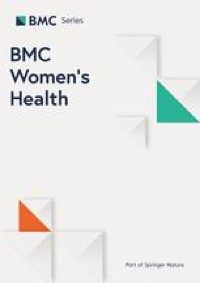
TA is a common disease but still less studied particularly in Africa. The aim of our study was to research factors associated with TA occurrence in women living in Yaoundé. We found that factors associated with TA were: age, hair style provider, the use of head ties, caps and nets and the annual frequency of chemical hair relaxation.
Concerning the sociodemographic factors, we found that participants with TA were older than patients without TA. This result aligns with study by Dadzie and Salam in 2015 in United Kingdom [13].
An age of 35 years or above increased by 4 folds the probability of developing TA (p = 0.016). Hence, there was a positive correlation between age and M-TAS, though this correlation was weak. Age was also identified by Dadzie et al. (OR = 1.04 ; p < 0.001) [13]. In fact, hair reach their growth peak at the age of 30. After this age, there is a diminution of the hair shaft’s diameter and a reduction of hair density ; hairs also become dryer [14]. These modifications are exacerbated by the use of hair dye and the use of flat iron [15]. Given this fragility of hairs with age, reducing aggressive treatment on them (chemical straightening, hair dryer or heat iron use) could contribute to reduce the occurrence of TA.
Women that usually use extensions for their hair grooming develop TA more than women who did not use them. In fact, causality between TA and hairstyles that chronically put in tension the hair shaft (dreadlocks, wigs, braids) is established [8, 16]. Extensions are natural or synthetic additives used in order to increase the size or the length of the hair [17]. Though extensions make hairstyles daily maintenance easy, they impose an additional charge to afro hair that is relatively fragile and less extensive; this favouring hair breakage. Moreover, women of Afro-descent prefer hairstyles with extensions because they a be kept for longer periods [18].Yet, the weight and the duration of wearing of these extensions also favour TA occurrence [10]. Extensions also exert a permanent and one direction traction on hairs. This could lead to and important rupture of hair shafts when added to hairs initially fragilized [19, 20]. A measure to avoid TA could consist of sensitising women in order for them to reduce the length and the volume of extensions, as well as the duration of their hairstyles. Also, hairstyles without extensions should be proposed as alternative solution particularly to women above 35 years old.
We did not find an association between hairdressing related symptoms and TA like other studies reported [8, 10, 13]. This could be due to the fact that majority of women in the present study rarely had such symptoms during hairdressing or asked the hairdresser to loosen their braids.
Women whose hairstyles were done only by a hairdresser were 5 times less susceptible to develop TA compared to women whose hairstyles were done both by a hairdresser and an untrained person (p = 0.008). Dadzie and Salam found that women having their hair grooming undertaken by a friend / family member with formal hairdressing training and qualifications were at risk of developing Alopecia [13]. We can presume that subjects with effective hair loss feel more comfortable to have their hair grooming by a family member rather than visit a hairdressing saloon where privacy is not always present; the friend/family member may be trained but don’t have all the appropriate equipment; which can lead to a vicious circle. Therefore, the requirement of professional services (qualified person in a well-equipped milieu) for hair grooming could help preventing TA in women. Also, hairdressers should be more sensitised on TA and retrained on the haircare and manipulation of « afro » hair.
Regular use of caps, nets and head ties was more common in TA group compared to the group without TA. We found that avoiding such accessories reduced by 5 times the probability of TA (adjusted OR = 0.2; p = 0.006). The regular use of tied buns has already been presented in Literature as a factor influencing TA’s onset [8]. These accessories are generally worn tightly and exerting traction on hairs. Moreover, women using them have their hair done before wearing those accessories. Religious or cultural motivations could also justify the regular use of various beauty accessories; it is the case for Sikh religion adepts who wear a head tie (turban) constantly. They later on develop TA [6, 21]. Nevertheless, even if the role of caps in TA onset is not firmly established; few studies like the one of Billero and al. found that localized alopecia was present in seven nurses whom attached cap to the scalp [6]. Our study globally evaluated the frequent use of these accessories. It seems necessary and appropriate that further studies should be carried out on the subject to enlighten this problematic. However, it could be judicious to educate women on the adequate use of these accessories particularly head ties and nets which seem very used by afro descent women.
Hair relaxation was the main chemical hair treatment used by women presenting TA. A frequency of hair straightening equal to once a year or less could be a protective factor from TA (adjusted OR = 0.3; p = 0.025). Rucker et al. also found an increasing risk of TA with chemical hair relaxant’s use [22]. In fact, hair straightening products destroy the monomolecular layer of fatty acid covalently bound to the cuticle. This hydrophobic layer retards water from wetting and penetrating the hair shaft and changing its physical properties [23, 24]. Thus, the relaxed hair is porous and less resistant to traction than the natural « afro » hair [20]. The cysteine residues of relaxed hair shafts are reduced ; meanwhile cysteine is a component of disulfuric bonds that contribute to hair rigidity [25]. This result could also mean that it is long term damages caused by hair relaxation that are deleterious for hairs. Given that hair relaxation is combined to other haircare practices namely extensions use, the risk of TA is bigger [8, 10, 19]. Sensitisation on the deleterious effect of hair relaxers on hairs, « afro » hair promotion and valorisation campaigns through media and especially social media, women sensitization on the good practices and the norms of usage of hair relaxer and increasing taxes on hair relaxers are several measures to restrict relaxers use and lessen TA in these women.
The earliness of the first chemical treatment was not associated to TA in our study. To our knowledge, there is no study that determined the relation between early onset of hair straightening and TA. But we did not collect the exact age at which the first chemical hair relaxation was done. It was then difficult to exclude an association between these two entities. That is why further research needs to be done to better explore the relation between both entities.
Limits of the study
Our study could present some limits, namely the fact that: (i)- Covid-19 pandemic considerably reduced our data collection period; (ii)- our study could present an information bias since data collected were relative to anterior exposures; (iii)- some data collected could be subjective; and (iv)- hairdressing saloons though chosen randomly, the sample obtained could not be representative of the town’s population. Nevertheless, this study is primer for further studies on the subject at a larger scale.



